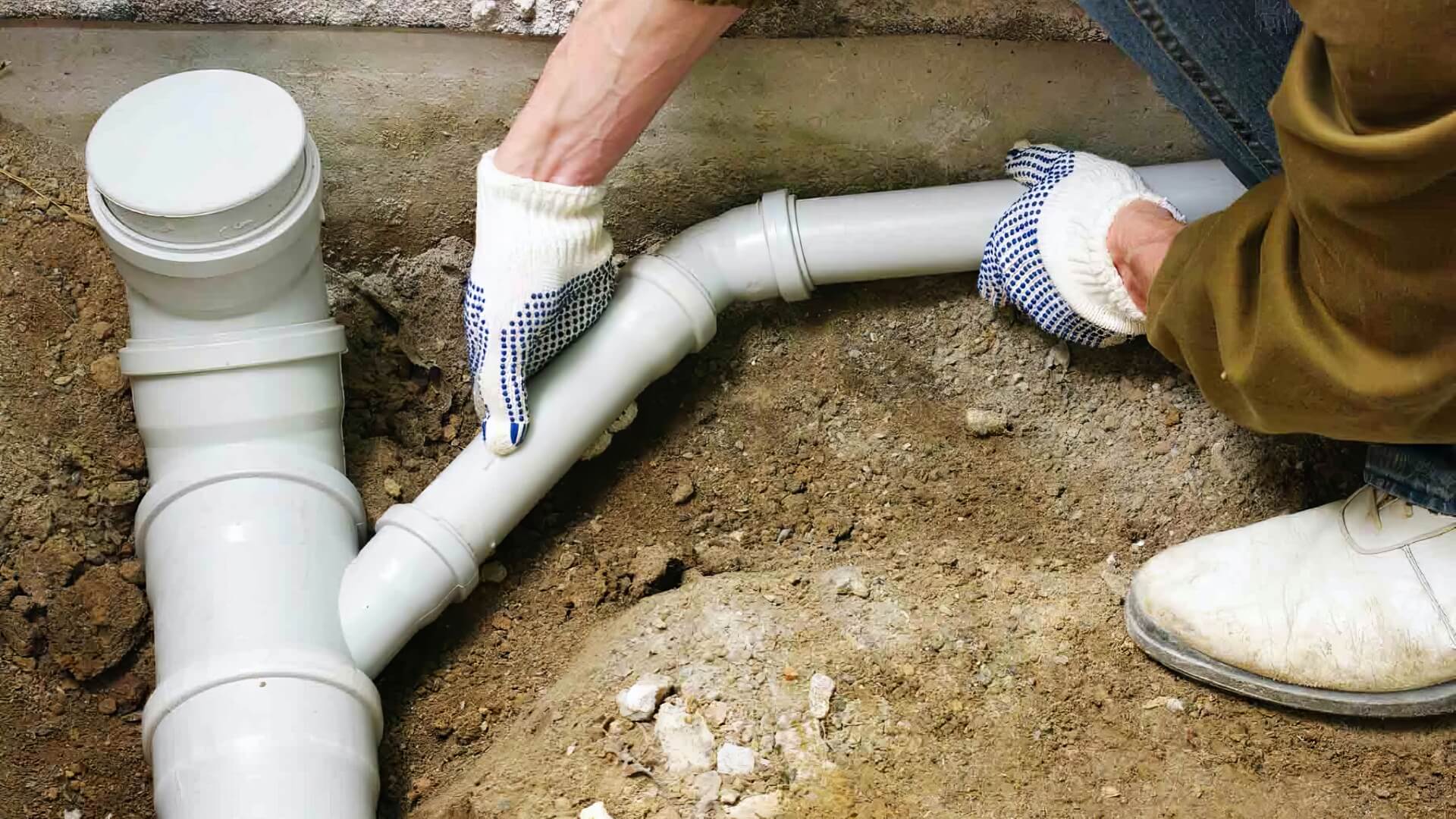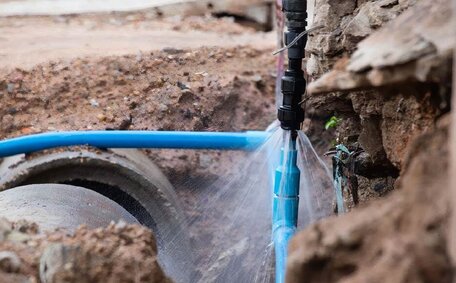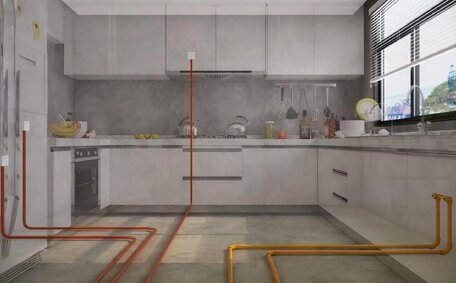What is Pipe Relining and How Does it Work?
Trenchless pipe relining effectively rehabilitates damaged sewer pipes, improving flow efficiency and pipe integrity while avoiding extensive excavation.
We employ a pipe relining process that involves inserting an epoxy resin liner into damaged sewer pipes, precisely moulding to their shape, then curing it to create a jointless new interior, safeguarding against tree root intrusion.
Pipe relining is suitable for various materials such as PVC, concrete, clay, and cast iron pipes, offering an innovative solution that places a new pipe within the old one, eliminating the need for excavation.
Pipe relining technology notably enhances water flow, prevents blockages, minimises disruption, extends pipe longevity, and saves costs compared to traditional replacements.
Does Relining Improve Water Flow Rates?
Indeed, pipe relining significantly enhances water flow rates by reducing friction and turbulence via a smooth, jointless interior created during the process, enabling freer water movement.
While the new lining might marginally reduce the internal diameter of your pipes, flow efficiency improves notably, with tests showing a 25-50% increase in flow rates due to the smoother interior lining.
Relining eliminates buildup, cracks, and corrosion that roughen old pipes over time. This disruption causes major turbulence and resistance that restricts water flow. By renewing the pipe wall, relining restores flow capacity in your plumbing system.
The seamless epoxy lining also prevents future blockages and root intrusion, along with grease and mineral deposits that can impede water flow, and is commonly used for repair without the need for digging. Relining thus ensures both immediate and sustained improvements in flow rates.
Factors Affecting Water Flow in Pipes
There are several key factors that affect water flow rates within pipes:
- Blocked drains and broken pipes include blockages - Buildup from grease, mineral deposits, roots, and other debris can partially or fully block pipes. This greatly restricts your ability to flow water through the system.
- Blocked broken pipe issues - Cracks, holes, corrosion, and missing sections of pipe create turbulence and friction that impedes water flow.
- Pipe diameter - Narrower pipes provide less volume for the flow water efficiently.
- Pipe material - Rough materials like concrete and clay slow flow more than smooth PVC and copper pipes.
- Pipe age - Older pipes develop more internal wear tear over decades of use.
- Number of bends - The more twists and turns in a system, the more flow is slowed.
All of these factors contribute to pipe problems by increasing drag and resistance within the existing pipe system. This requires increased water pressure to push flow through the system and can lead to reduced flow at outlets.
Pipe relining addresses these concerns by renewing pipes, significantly reducing flow restrictions. It creates a smooth, seamless inner surface of the pipe wall that allows water to flow freely with less disruption and turbulence.
Comparing Relining and Traditional Pipe Replacement
Trenchless pipe relining offers numerous benefits compared to traditional pipe repair methods:
- Cost Savings - Pipe relining can yield substantial savings, often costing about 60% less than traditional methods, with no trenches to dig or landscapes to restore.
- Minimal Disruption - The pipe can be relined usually in just a few hours with no damage to surrounding areas or properties.
- Longevity - When pondering how long does pipe relining last, it’s heartening to know epoxy linings can last 50+ years, thereby extending the lifespan of ageing pipes.
- Restored Flow - The lining can improve flow rates in pipe relining by 25-50% without reducing plumbing system capacity.
- Eco-Friendly - An environmentally friendly choice with no waste, debris, or environmental impact from excavation.
While relining may slightly decrease diameter, the renewed flow efficiency outweighs the drawbacks associated with traditional methods. Relining avoids a full replacement while still restoring pipes for the long term.
So for most materials and systems, Evaluating the worth cost, it’s evident that pipe relining is quicker, less invasive, and more cost effective than traditional pipe replacements.
The Financial Benefits of Pipe Relining
Pipe relining offers marked cost savings compared to traditional excavation, eliminating the need for heavy machinery, extensive labour, and landscape repair.
Costs for top-notch pipe relining services are roughly 60% less than those for traditional pipe replacement, with an average estimate of around $3000 for relining an entire household’s plumbing.
Manufacturers often provide warranties of up to 50 years for the seamless epoxy lining. Thus, there’s no concern regarding long-term financial protection against future pipe failures, beyond the immediate cost savings.
There are also ongoing savings from enhanced flow efficiency. Enhancements such as pipe relining can help improve water pressure and volume, potentially leading to lower utility bills over time. The risk of major leaks, bursts, and flooding is also reduced, avoiding costly property repairs.
Boosted property value is another financial incentive, as buyers often prefer homes with reliable, long-lasting plumbing systems over those with outdated pipes nearing the end of their lifespan.
At a reduced cost, pipe relining offers immediate and enduring financial benefits by rejuvenating your plumbing to near-new condition.
The Convenience and Minimal Disruption of Relining
One of the biggest advantages of relined pipes is the minimal disruption they cause compared to traditional pipe replacement methods.
Your toilet and other facilities remain functional as pipes can typically be relined in just one day without the need for major excavation works. There is no digging up your lawn, floors, driveways or landscaping. There’s also no need for prolonged closure of rooms.
This allows normal life to continue with minimal interference, offering a solution your plumbing challenges require as the best pipe relining techniques are applied. Households don’t have to relocate during the works. And businesses like restaurants and offices can remain open as usual.
The lack of digging also avoids environmental issues with soil, debris and waste removal. The carbon footprint is lower too without trucks and equipment onsite.
The small access points used also reduce long-term damage to the property and ensure the job done is efficient. Walls, drives and gardens remain fully intact after relining.
Pipe relining provides a rapid, low-impact procedure with sustained access, ensuring minimal disruption to existing infrastructure.
The Eco-Friendly Nature of Pipe Relining
Pipe relining stands out as an eco-friendly alternative to traditional replacements, creating minimal construction waste and debris by avoiding extensive excavation.
Without the need to excavate and dispose of old piping, pipe relining avoids adding to landfill volume, and its lightweight materials and equipment have a lower environmental footprint than heavy machinery.
The process itself is also efficient, taking just hours rather than days or weeks like a full replacement. This vastly reduces emissions from truck movements and power tool usage onsite.
The smooth epoxy lining from pipe relining prevents scale buildup and blockages, optimising water flow and saving the energy needed to pump water through corroded pipes.
Pipe relining resonates with environmental consciousness, delivering a solution that minimises waste, reduces power use, curbs emissions, and boosts energy efficiency.
Longevity and Property Value Benefits
Pipe relining provides long-term durability that rivals or surpasses new pipe installations, with epoxy linings commonly guaranteed by manufacturers for 50 years or more.
By restoring your existing pipe integrity without the need for replacement, relining prevents the cost and disruption of future repairs. It provides a permanent solution for repairing damaged, leaky plumbing systems.
Enhanced reliability and an extended lifespan from pipe relining can raise your home’s value, as buyers tend to prefer properties with updated and dependable plumbing systems.
Pipe relining secures long-term reliability and adds value to your property, ensuring peace of mind for years ahead.
Pipe Relining for Different Materials like PVC and Cast Iron
Pipe relining is a highly adaptable repair technique, compatible with a range of plumbing materials found in both residential and commercial properties.
For sewer line repair, relining proves to be effective for:
- PVC pipes - The smooth plastic material is an ideal surface for epoxy resin to adhere to.
- Cast iron pipes - Relining renews corroded and rusting iron pipes to prevent leaks.
- Concrete pipes - It protects ageing concrete from further deterioration and cracking.
- Clay pipes - Relining stops roots and groundwater penetrating the pores of clay.
Thanks to its flexible composite resin material, the liner can adapt to a variety of pipe configurations, making relining suitable for everything from simple PVC to complex cast iron drain systems.
The installation process is non-invasive and can take place without needing to access the actual damaged pipes. Entry and exit points are created to insert pipe liners at openings like manholes or drain lines, showcasing how the procedure can be non-intrusive. From there, one understands how pipe relining can renew entire pipe runs.
Pipe relining can rejuvenate nearly any system, renewing pipes without complete replacement. Making it an extremely versatile and adaptable repair method for residential and commercial settings alike.
Reliability and Quality of Pipe Relining
Pipe relining proves its worth through reliable, high-quality repair outcomes. As a longstanding trenchless technology, it has demonstrated success for over 25 years globally.
The seamless epoxy resin lining created during the relining process provides a longterm solution with a smooth, durable and robust pipe repair outcome. It effectively renews old piping systems to better than new condition, restoring flow capacity and preventing future blockages.
Fully licensed and accredited professionals carry out pipe relining in the Hurstville area, utilising industry-leading CIPP relining products to ensure dependable, high-quality sewer line repairs backed by long-term guarantees.
Our pipe relining services provide a permanent solution to restore your plumbing integrity, offering rapid emergency repairs without the need for excavation or trench digging, ensuring minimal disruption.
We stand behind the quality of our workmanship. Our pipe relining processes undergo stringent quality controls to resolve plumbing issues and ensure optimal standards are met every time. So you can trust your property is in safe hands with the benefits of pipe relining.
Contact your local friendly team today on 1300 349 338 for a no obligation assessment of your pipe relining needs. Discover why pipe relining is a highly reliable, quality solution for residential and commercial properties across the Hurstville region.






